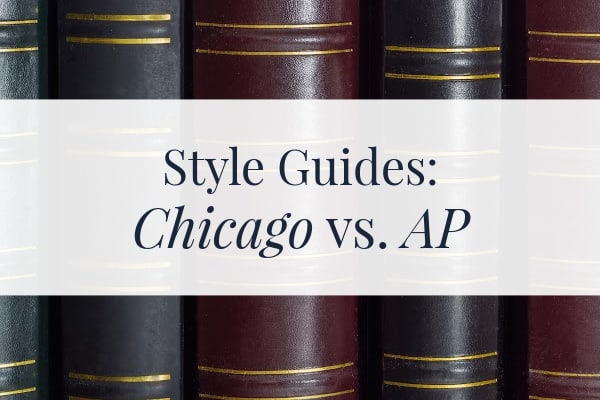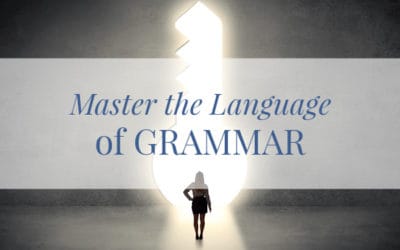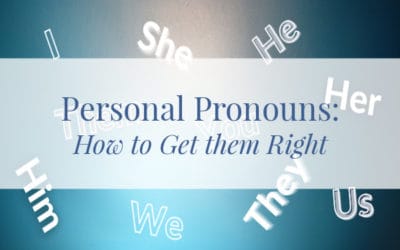We want grammar and punctuation rules to be clear and definitive.
Many of them are. Once you get past the general rules and into the details, however, you will find gray areas where there are multiple right answers.
Books that discuss the English language have largely the same information and mostly agree with each other. But when it comes to style guides, there can be disagreement.
What is a style guide?
A style guide is a tool for maintaining consistency in a piece of writing. Using a style guide helps ensure that the text follows the correct language rules and is internally consistent.
Because style guides exist to maintain consistency, they like to avoid ambiguity. This means that when two variant spellings are both widely accepted, a style guide will often choose one as the “correct” form.
When consulting multiple style guides, you can see variation in which options are recommended and labeled as “correct.”
And this is why it is important to use the right style guide.
Different styles for different fields
The most significant difference between style guides is what they are used for. Many different style guides exist because there are many different types of writing.
Most are designed for a specific field. There are style guides for journalism, psychology, law, medicine, technology, and many other areas.
When everyone in a certain field uses the same style guide, written works within that field can be consistent with each other and use style rules that readers are familiar with.
The two most widely used style guides for American English are The Chicago Manual of Style and The Associated Press Stylebook.
Comparing the two leading style guides
When choosing between these style guides, it is important to understand what each is best used for.
Chicago
The Chicago Manual of Style was created by the University of Chicago Press, the largest university press in the United States. It’s the leading style guide among publishers, including everything from fiction to academic writing.
Most of the books on your shelf are probably written using the rules of Chicago style.
The Chicago Manual of Style is currently in its seventeenth edition, which was published in 2017. It is updated regularly with the three most recent editions coming out seven years apart.
Associated Press
The Associated Press Stylebook was created by The Associated Press, an independent global news organization. <strong”>This is the style guide used by most journalists, newspapers, and magazines.</strong”>
When you read a news article, whether in print or online, you can typically assume it follows AP style.
The Associated Press Stylebook is now in its fifty-fifth edition, published in 2020, and is updated biennially. It is important for journalists to have up-to-date guidance on how to treat any new terminology surrounding the issues and events that they cover, which is why the AP stylebook is published more regularly than The Chicago Manual of Style.
What is discussed in each stylebook?
Chicago
The Chicago manual is a very thorough guide to the rules of the English language. It contains in-depth discussion of grammar and punctuation as well as thorough treatment of topics like spelling and capitalization. There is also a section about source citations and bibliographies, covering both notes and bibliography style and author-date style.
In addition, this stylebook gives readers a detailed look at the publishing process itself. It covers topics like manuscript preparation and editing, giving an overview of how authors, editors, and publishers work together to create the final published book. It also gives guidelines on how to treat illustrations and tables as well as discussing how rights are acquired and what the author’s responsibilities are in navigating the world of copyright law.
The Chicago Manual of Style is an excellent tool for any author, book editor, or publishing professional.
It’s also handy for people who want a full overview of English grammar or a thorough reference for exactly how each punctuation mark can be used.
Associated Press
The AP style guide is not as comprehensive as the one from Chicago. It primarily covers areas where there is disagreement or ambiguity. This manual focuses on what is most relevant to journalists rather than trying to inform readers of all the rules of the English language.
The AP stylebook contains brief sections on grammar and punctuation but is mostly concerned with how certain words should be used. The largest section in the AP stylebook consists of encyclopedic entries that give information such as spelling, capitalization, and usage guidelines for various terms.
There are also sections about reporting on different topics, such as business or medicine, with standards of news reporting that should be followed.
In addition, the AP stylebook contains a statement about the organization’s values and principles in journalism.
Areas of disagreement
The style guides from AP and Chicago agree on the basic grammar rules of English as well as most punctuation rules, spellings, and similar issues. But there are some smaller differences that are still important even if they are less noticeable to the average person.
One example of this is the Oxford comma. While Chicago style dictates that a comma should always be used before the last two items in a series, AP style argues that this final comma should only be used when the meaning would otherwise be ambiguous.
This may seem like a small distinction, but following a style guide often involves keeping track of small distinctions like this.
Some readers won’t notice a missing comma, or an extra comma, but others will. These small details are why it’s important to consistently follow whichever style guide you are working with.
Reasons to use both
The Chicago Manual of Style is a more comprehensive guide to English grammar and punctuation. It covers several areas of our language in more detail than the AP stylebook, and covers several more that AP doesn’t address at all.
A journalist who generally relies on the AP style manual may benefit from having a copy of The Chicago Manual of Style for situations where, for example, a more detailed guide to English punctuation rules is needed.
On the other hand, the AP style guide is updated every two years, while the Chicago manual has a longer period of time between new editions. So if you are writing about technological terms or current events, you might want to have the most up-to-date guidance on how new terms are spelled, capitalized, or abbreviated.
Even if an editor works exclusively on books that follow Chicago style, they may run into a term that isn’t found in the Chicago style guide or its recommended dictionary. In this situation, this editor would want to have a copy of The Associated Press Stylebook to refer to.
Each of these two leading style guides contains information that the other does not, and this is a good reason to use both.
Additional style guides
You may only need The Associated Press Stylebook or The Chicago Manual of Style, but it can be worthwhile to explore other style guides that are available for your particular field.
For example, the AMA Manual of Style from the American Medical Association is used by journals and publishers in the medical field, and the Publication Manual of the American Psychological Association is used by writers in the social sciences. These are only two of a large number of specialized style guides.
Whatever field you are in, it’s great to own multiple style manuals so that if you have a question that isn’t addressed in one, you can find an answer in one of the others.





